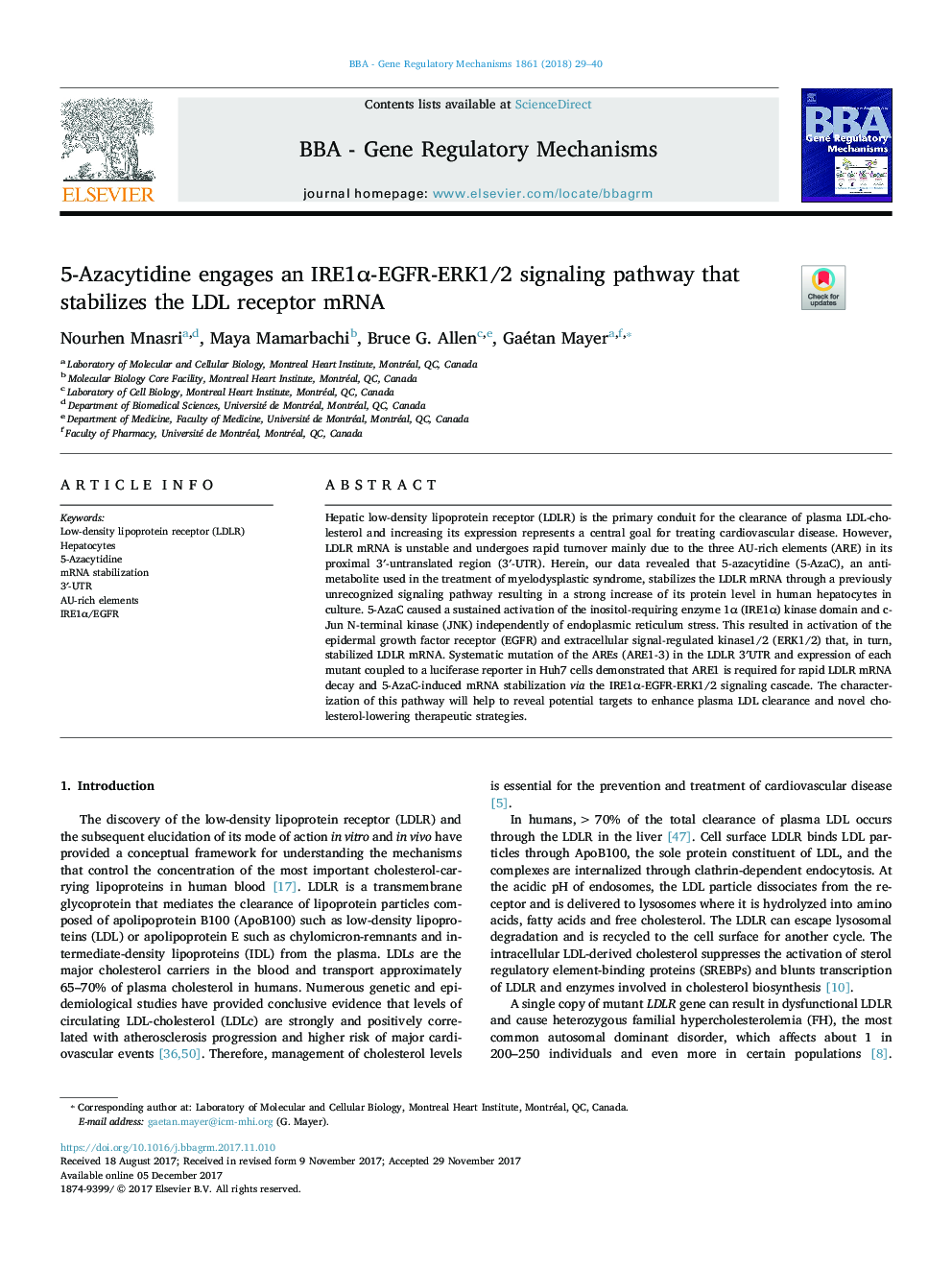| Article ID | Journal | Published Year | Pages | File Type |
|---|---|---|---|---|
| 8300430 | Biochimica et Biophysica Acta (BBA) - Gene Regulatory Mechanisms | 2018 | 12 Pages |
Abstract
Hepatic low-density lipoprotein receptor (LDLR) is the primary conduit for the clearance of plasma LDL-cholesterol and increasing its expression represents a central goal for treating cardiovascular disease. However, LDLR mRNA is unstable and undergoes rapid turnover mainly due to the three AU-rich elements (ARE) in its proximal 3â²-untranslated region (3â²-UTR). Herein, our data revealed that 5-azacytidine (5-AzaC), an antimetabolite used in the treatment of myelodysplastic syndrome, stabilizes the LDLR mRNA through a previously unrecognized signaling pathway resulting in a strong increase of its protein level in human hepatocytes in culture. 5-AzaC caused a sustained activation of the inositol-requiring enzyme 1α (IRE1α) kinase domain and c-Jun N-terminal kinase (JNK) independently of endoplasmic reticulum stress. This resulted in activation of the epidermal growth factor receptor (EGFR) and extracellular signal-regulated kinase1/2 (ERK1/2) that, in turn, stabilized LDLR mRNA. Systematic mutation of the AREs (ARE1-3) in the LDLR 3â²UTR and expression of each mutant coupled to a luciferase reporter in Huh7 cells demonstrated that ARE1 is required for rapid LDLR mRNA decay and 5-AzaC-induced mRNA stabilization via the IRE1α-EGFR-ERK1/2 signaling cascade. The characterization of this pathway will help to reveal potential targets to enhance plasma LDL clearance and novel cholesterol-lowering therapeutic strategies.
Keywords
Related Topics
Life Sciences
Biochemistry, Genetics and Molecular Biology
Biochemistry
Authors
Nourhen Mnasri, Maya Mamarbachi, Bruce G. Allen, Gaétan Mayer,
